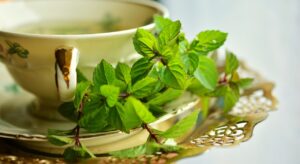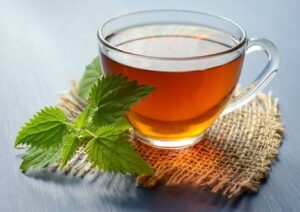Green tea has topped the list for all health-conscious people in recent years. In fact, green tea was unheard of by the common man even 20 years back. Today the scenario is that there is not only a demand for green tea but also different flavors of the same!
Matcha and Hojicha are different varieties of Japanese Green tea. High quality matcha has a vibrant green colour that fades as the quality does. On the other hand, surprisingly, hojicha has a reddish-brown color. Its colour varies depending on its primary source, whether it has come from sencha, bancha or kukicha which are varieties of green tea origins.
Fresh matcha has a flavoured redolence whereas hojicha gives you that rustic aroma as a mesmerizing wet earth sneaks into your olfactory nerves. Matcha is ground and pounded into a green powder whereas hojicha is roasted and rolled with tea stalks or twigs to turn into leaf tea.
When it comes to the taste, matcha varies from bitter, to a broth like savory taste, depending on its quality but hojicha gets an additional smoky flavour. The caffeine content in both varieties is negligible which only adds to their popularity among the health-conscious.
Unlike matcha, hojicha does not require complete boiling of water and the soaking time is less than a minute. Any more than that, and there is a chance of it turning bitter. Matcha has been popular in North America, but now hojicha too is gaining immense popularity as the go-to morning beverage in the western world. What makes it more popular and high in demand is its unique aroma which largely contributes to enticing people into trying it, and subsequently, loving it. Hojicha can even be tried with milk which is unheard of with almost all other green teas of the world.
Japanese flavours have caught the fancy of the Western world, and this cross-continent liking has been popular since World War 2. But the recent popularity of Hojicha is slowly replacing matcha. “Hojicha is made from any part of the tea plant-twigs, stalks, stems and the leaves,” says Hojicha Co. co-founder Francois Mathieu. He founded the company in 2018 with Danielle Geva after tasting the authentic flavor in its home country Japan.
The best part of how hojicha has comfortably overtaken matcha is its capacity to attract youngsters towards it as it can be added to flavored ice-creams and desserts!
All of this said and done, each variety has its own takers who vouch for the flavors they love. The beauty in relishing both the teas is the intricate method of making it. One needs the right temperature, the right amount of boiling water and also the perfect duration of soaking in order to get the true flavour to suit one’s palate. Not to forget, in the hojicha leaf variety which is most popular, the number of tea leaves has to be delicately balanced per cup keeping in mind even the size of the cup! It is a delicate tea and is best served in small fragile Japanese cups much like the Japanese themselves.
Out of the two, health benefits are better from hojicha as it is very high in antioxidants which helps flush out harmful radicals from the body and acts as a natural cleanser of toxic elements from the body. Your skin feels radiant and glowing with continuous consumption of hojicha along with delaying the signs of aging.
So, which one do you think won the battle? Let us know in the comments below!



